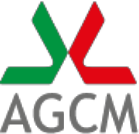NATURAL GAS SECTOR (Conclusion of the fact-finding investigation)
PRESS RELEASE
The Italian Competition Authority concluded the fact-finding investigation into the natural gas sector initiated January 10th, 1994.
The survey was aimed at verifying the current structural and regulatory arrangement of the sector, with particular regards to the actions to be taken to foster competition in the market concerned. The Authority emphasized the importance of splitting Snam (Eni gas subsidiary) into two or more separate companies, in order to separate the gas importing and distribution (over which Snam has a monopoly) from the management of gas transportation, storage and despatchment.
The investigation ascertained that the absence of competition in the upstream phase of supply is the main distortion of the Italian market of natural gas. Furthermore, the strict vertical ties between the various phases of the gas chain, within the Eni energy conglomerate, affect competition appreciably. Through Snam and Agip, Eni has traditionally had a virtual monopoly of the entire Italian gas chain from supply to distribution, except for insignificant quantities of domestic natural gas produced by third parties.
In this framework, the removal of the downstream obstacles to competition alone in respect to the upstream phase of supply is unlikely to bring about beneficial effects, if it is not accompanied by both a real possibility of choice among a number of gas suppliers, with comparable dimensions (the so called gas-to-gas competition); and a growing competitive pressure of the offer of other energy sources on the gas suppliers conduct (interfuel competition).
In the Authority's opinion, a gas-to-gas competition can be achieved only if the Eni vertical conglomerate is reorganized. In particular, the Authority deemed that the Snam de facto monopoly over importing and primary distribution and the management by the same company of gas transportation, storage and despatchment can not coexist. As such, importing and primary distribution, on the one side, and transportation, storage and despatchment, on the other side, should be managed by separate entities. This measure, associated with the extension of third parties access to the network for commercial purposes too, would allow competing companies to contend for users served up to now by Snam in a de facto monopoly regime.
The competitive advantages deriving from this modification of the Eni conglomerate are many. First, by placing itself in a position of separation and independence of the company working in the gas supply and primary distribution, the gas network carrier running storage and modulation would be adequately given an incentive to provide its own services, at fair and non-discriminatory conditions (under regulatory controls), to likely new competitors (domestic or foreign) working exclusively in the commercial distribution.
These new operators could be allowed access to the network to carry out their activity and serve customers looking for the best supply opportunities. Second, only if and when a vertical splitting of Snam would occur according to the above modalities, the saturation effect of the transport capacity implemented in the national territory, which is due to the new import contracts signed by Snam in the period 1996-1997, could be mitigated, while the consequences on the capture of gas demand shares in the next years would be reduced.
In fact Snam should negotiate the right-of-way with the gas network carrier, as well as other likely operators working in the market of gas supply and distribution.
Lastly, the Authority pointed out that the suggested arrangement would ensure more transparency of the sale conditions applied by the current monopolist, and would impede the creation of unjustified margin levels, incorporated by a same operator into gas selling prices to the diverse segments of customers. Snam can exercise its market power over end users, in virtue of the coincidence of interests linked up with the same company, which has a de facto monopoly over the foreign supply and a quasi-monopoly over the national supply, and, at the same time, owns nearly all the gas transport and primary distribution in Italy.
With respect to a growing competitive pressure through the so-called interfuel competition, the Authority suggested a progressive reequilibrium of the competitive distortion due to the fiscal law on gas. A progressive tax reequilibrium of the natural gas in respect to the other oil derived products would be desirable given that the penetration of natural gas as primary energy source, for civil use in particular, exhausted its phase of development and initial diffusion. The introduction of liquefied oils with less environmental impact tends to reduce the disadvantage compared with natural gas, in terms of environmental implications.
Such reequilibrium would permit, on the one side, to restore interfuel competition to a more correct comparison based on the relative industrial prices; on the one side, it would impose on natural gas vendors (both Snam and distribution companies) a review of their conduct in order to act according to the competition principles and to protect consumers.

